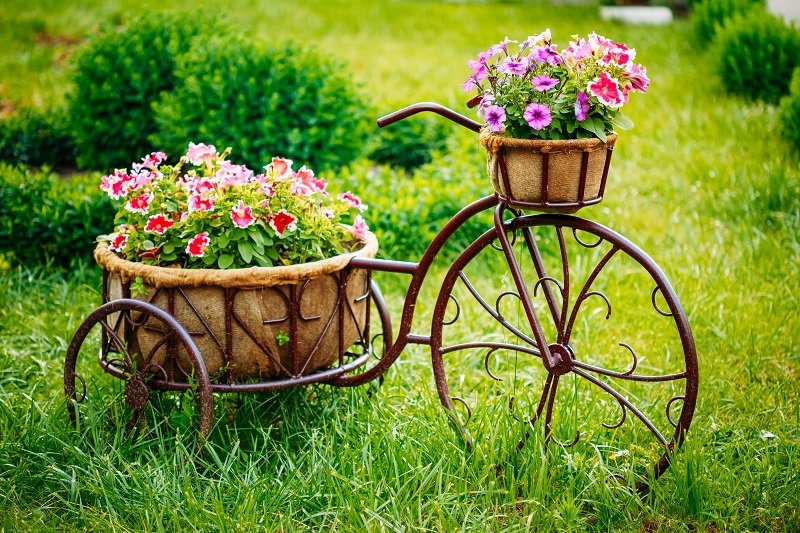Achieving Longevity for Your Poinsettias
Posted on 14/08/2025
Achieving Longevity for Your Poinsettias: A Comprehensive Guide
Poinsettias, with their vibrant bracts and festive charm, have become synonymous with the holiday season. However, many plant enthusiasts struggle to keep their poinsettia plants healthy and beautiful well beyond December. Are you ready to learn the secrets for extending the life of your beloved poinsettia beyond the holidays? In this guide, we'll delve into expert tips and best practices for maximizing the lifespan of your poinsettias. Get ready to transform your seasonal decoration into a flourishing, year-round display!

Understanding Your Poinsettia
To successfully achieve longevity for poinsettias, it's essential to understand what makes these dazzling plants tick. Originally hailing from Mexico and Central America, poinsettias (Euphorbia pulcherrima) thrive in warm, tropical climates. Their famous red, pink, or white "flowers" are actually colored leaves called bracts, which surround the plant's tiny yellow flowers (cyathia).
- Poinsettias are perennial shrubs in their native environment.
- They prefer bright but indirect light and consistent temperatures.
- With proper care, poinsettia plants can survive and even rebloom year after year.
Common Challenges in Poinsettia Care
While many consider poinsettias as mere decorative plants for Christmas or New Year's, these plants can actually bring color to your home all year long. Unfortunately, improper care often leads to leaf drop, premature fading, or even death. The most frequent issues involve:
- Overwatering or underwatering
- Exposure to cold drafts or direct heat
- Insufficient light
- Neglect post-holiday care
Buying Healthy Poinsettias for Long-Term Success
Poinsettia longevity starts at the moment of purchase. Select plants that are healthy, with lush green leaves right down to the soil line, and tightly closed central cyathia. Avoid plants with yellowing, droopy, or spotted foliage. See the checklist below for selecting high-quality poinsettias that will thrive in your home:
- Vibrant, deep-colored bracts with no discoloration or wilting.
- Healthy, green leaves beneath the bracts are a sign of vitality.
- Small, greenish-yellow buds rather than fully opened cyathia--these tell you the flowering bracts are fresh.
- No evidence of pests such as whiteflies or aphids.
- Firm, upright stems with no sign of breakage or rot.
When transporting your new poinsettia home, always protect it from the cold! Exposure to low temperatures for even a few minutes can result in leaf drop and shortened lifespan.
Creating the Ideal Environment Indoors
To maximize poinsettia lifespan, it's crucial to mimic their native habitat as closely as possible, even indoors.
Light Requirements
- Poinsettias need bright, indirect sunlight for at least 6 hours daily.
- Place your plant near a south, east, or west-facing window, but avoid harsh midday sun that can scorch the bracts and leaves.
- Insufficient light can cause leaf drop and pale bracts.
Temperature Guidelines
- Ideal daytime temperatures: 65-70?F (18-21?C)
- Night temperatures: No less than 60?F (15?C)
- Avoid placing your poinsettia near heating vents, radiators, or drafty windows, as sudden temperature changes can be detrimental.
- Stable temperatures promote healthy growth and longer life.
Humidity and Air Flow
- Poinsettias love moderate to high humidity (ideally 50-60%).
- Dry winter air can cause leaf edges to brown--use a humidifier or place the pot on a shallow tray with water and pebbles.
- Ensure good air circulation but protect from cold drafts.
Proper Watering Techniques: Key for Poinsettia Longevity
One of the most common reasons poinsettias fail to thrive beyond the holidays is improper watering. Learn the right techniques to ensure your plant lives longer and looks its best.
How to Water Poinsettias
- Check soil moisture every few days. Water only when the top inch of soil feels dry to the touch.
- Use room-temperature water, and moisten the soil evenly until water runs out the bottom of the pot. Discard any excess in the saucer to prevent root rot.
- Avoid letting the plant sit in water, which leads to soggy roots and leaf drop.
- Water less frequently in cooler months or when the plant is not in active growth.
Signs of Overwatering and Underwatering
- Overwatering: Yellow or wilted leaves, root rot, mushy stems, fungus gnats.
- Underwatering: Drooping, wilted foliage, dry soil pulling away from the pot's sides.
Tip: Consistent moisture is the golden rule--never let your poinsettia dry out completely, nor let it stand in water.
Fertilization: Fueling Long-Lasting Poinsettia Health
While you shouldn't fertilize newly purchased or flowering poinsettias, regular feeding is crucial for longevity once the blooming period ends.
When and How to Fertilize
- Begin feeding your poinsettia about 4-6 weeks after the holidays, or when new growth appears.
- Use a balanced, all-purpose water-soluble fertilizer (such as 20-20-20) diluted to half strength.
- Fertilize once every 2-4 weeks during active growing periods (spring and summer).
- Pause fertilization if the plant stops growing or bracts are colored for display.
Post-Holiday & Year-Round Care Steps for Poinsettia Longevity
Keeping your poinsettias alive after the holiday season is not only possible, but with the right steps, your plant can flourish and even bloom again next year. Follow this comprehensive year-long care calendar to maximize your poinsettia's lifespan:
January - March: Rest Period
- After the holidays, your poinsettia is likely to lose some leaves; this is normal.
- Continue to provide bright indirect light and only water when soil is dry.
- Avoid fertilization during this resting stage.
April - May: Pruning and Repotting
- In early spring, cut stems back to 4-6 inches above soil to encourage bushier growth.
- Repot if roots are crowded, using fresh, well-draining soil.
- Resume light feeding as new growth appears.
June - August: Outdoor Summering (Optional)
- If you have a warm, sheltered outdoor spot, place your poinsettia outside after temperatures consistently stay above 60?F (15?C) at night.
- Acclimate gradually to outdoor conditions; avoid direct midday sun.
- Water and fertilize as needed.
September - October: Preparing for Reblooming
- Bring your plant indoors before night temperatures drop below 55?F (13?C).
- Keep in bright indirect light--now comes the crucial step for re-blooming your poinsettia!
October - November: Photoperiod Control
- Poinsettias require long, uninterrupted nights (at least 14 hours of complete darkness) for about 8-10 weeks to initiate blooming.
- Place in a dark closet or cover with a box or black cloth from early evening until morning each day; then return to bright light during the day.
- If successful, you'll see new colored bracts emerging by mid-November.
December: Holiday Brilliance Returns
- Enjoy your poinsettia's stunning blooms once again.
- Resume regular watering and care as previously described.
Troubleshooting Common Poinsettia Problems
Even with diligent care, problems can develop. Achieving greater longevity for poinsettias is all about early detection and corrective action.
- Leaf Drop: Usually caused by drafts, cold snaps, or inconsistent watering. Move plant to a stable spot and adjust care.
- Wilting: Either over- or under-watering. Check soil moisture and drainage.
- Pale Bracts: Not enough light or the plant is past blooming phase. Provide brighter indirect light.
- Pests: Watch for whiteflies and aphids. Remove pests by washing leaves gently with mild soap and water, or use insecticidal soap.
FAQs on Prolonging the Life of Your Poinsettia
Can Poinsettias Last All Year?
Yes! Poinsettias are perennial plants that can last for several years with the proper care outlined above. It is entirely possible to keep your plant alive and even encourage it to rebloom next winter.
Are Poinsettias Poisonous?
Poinsettias are not highly toxic, contrary to popular belief. The sap may irritate sensitive skin or cause mild stomach upset if ingested in large quantities, but the risk is low. Still, it's best to keep them away from pets and small children.
How Do I Get My Poinsettia to Bloom Again?
Begin a special dark treatment in early fall, giving your plant 14 hours of uninterrupted darkness and 10 hours of light daily for 8-10 weeks.
Tips for Displaying Long-Lived Poinsettias
- Rotate your poinsettia weekly to promote even growth and prevent the plant from leaning toward the light.
- Select decorative pots with adequate drainage--never leave them in closed, foil-wrapped sleeves for long periods.
- Combine with other houseplants for an eye-catching arrangement year-round.

Sustainability and Eco-Friendly Choices
Achieving longevity for poinsettias is also great for the environment. Rather than discarding your plant after the holidays, you reduce waste and create a more sustainable approach to home decor. By nurturing your poinsettia year after year, you also save money and enjoy the satisfaction of successful long-term care.
Conclusion: Maximize Your Poinsettia's Lifespan
With these science-based care techniques and maintenance strategies, your poinsettia longevity can surpass expectations. Remember: it starts with buying a healthy plant, creating the right environment, proper watering, and year-round attentive care. Equipped with knowledge and a little patience, your poinsettias can brighten your home through many holidays to come.
Are you ready to achieve stunning results and make your poinsettia thrive beyond Christmas?
Quick Recap: Key Steps for Long-Lived Poinsettias
- Buy healthy, fresh plants with no signs of disease or pests
- Provide bright, indirect light and stable temperatures
- Water correctly and avoid extremes
- Fertilize during growth periods
- Prune and repot as needed
- Use the darkness technique for reblooming
- Monitor for pests and disease
By following these steps, you can achieve impressive longevity for your poinsettia plants and enjoy their rich colors and beauty for many seasons. Happy growing!
Latest Posts
Unraveling 8 Sunflower Facts That Will Amaze You
The Symbolic Power of Your Birth Flower and Its Clues to Your Personality
The Emotional Lift of Florals: Unleash the Power of Blossoms
Achieving Longevity for Your Poinsettias
Peony Flowers: The Beautiful Language of Their Colors and Symbols





